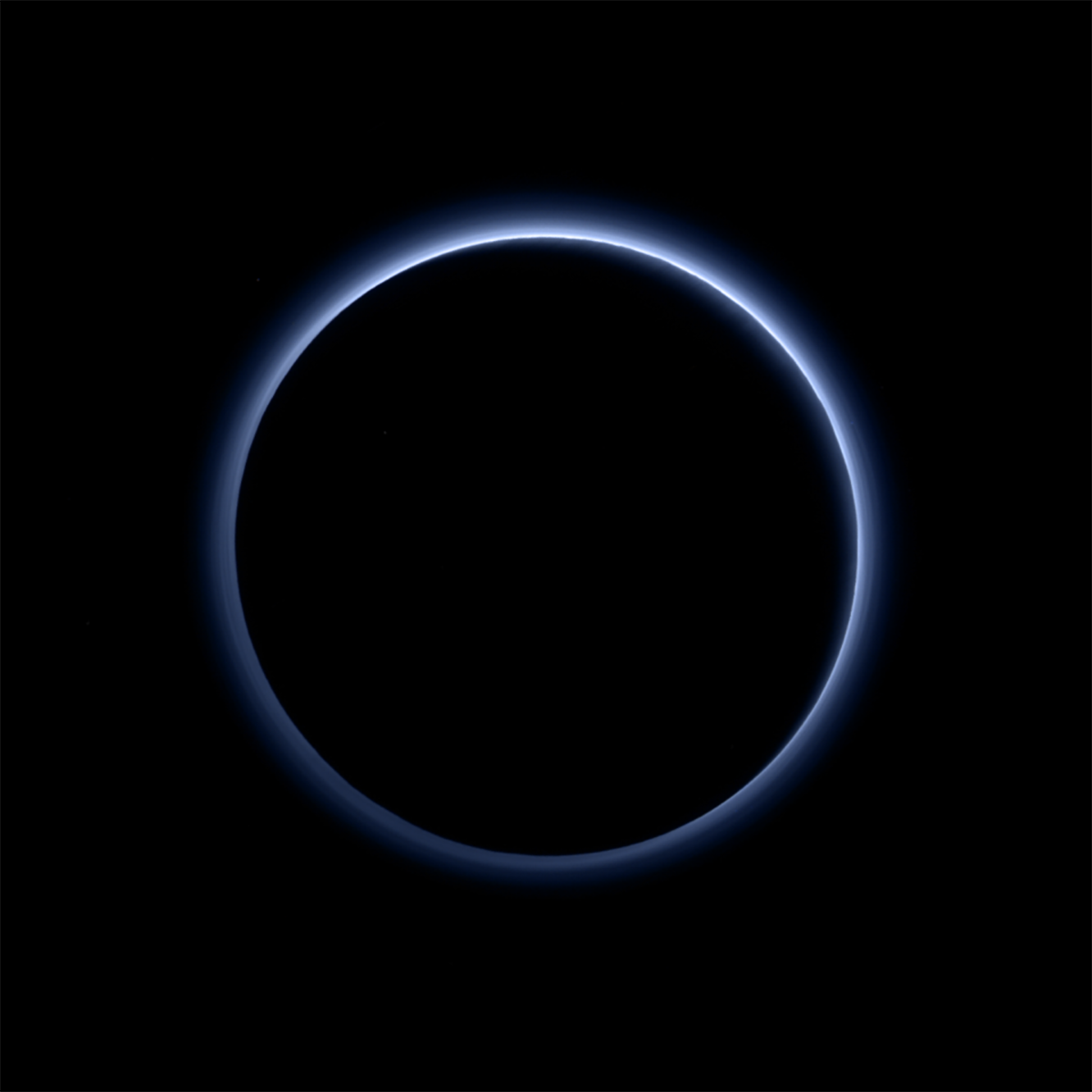
As new images and data continue to be sent back from the New Horizons spacecraft, scientists have quickly learned that Pluto is a world full of surprises. Today, the mission team revealed that Pluto indeed is a weirdly colorful place – the latest images show blue skies and red water ice. Almost like home, although not quite.
Finding blue skies on Pluto was certainly unexpected for such a small world way out in the Kuiper Belt on the outer Solar System.
“Who would have expected a blue sky in the Kuiper Belt? It’s gorgeous,” said Alan Stern, New Horizons principal investigator from Southwest Research Institute (SwRI), Boulder, Colorado.
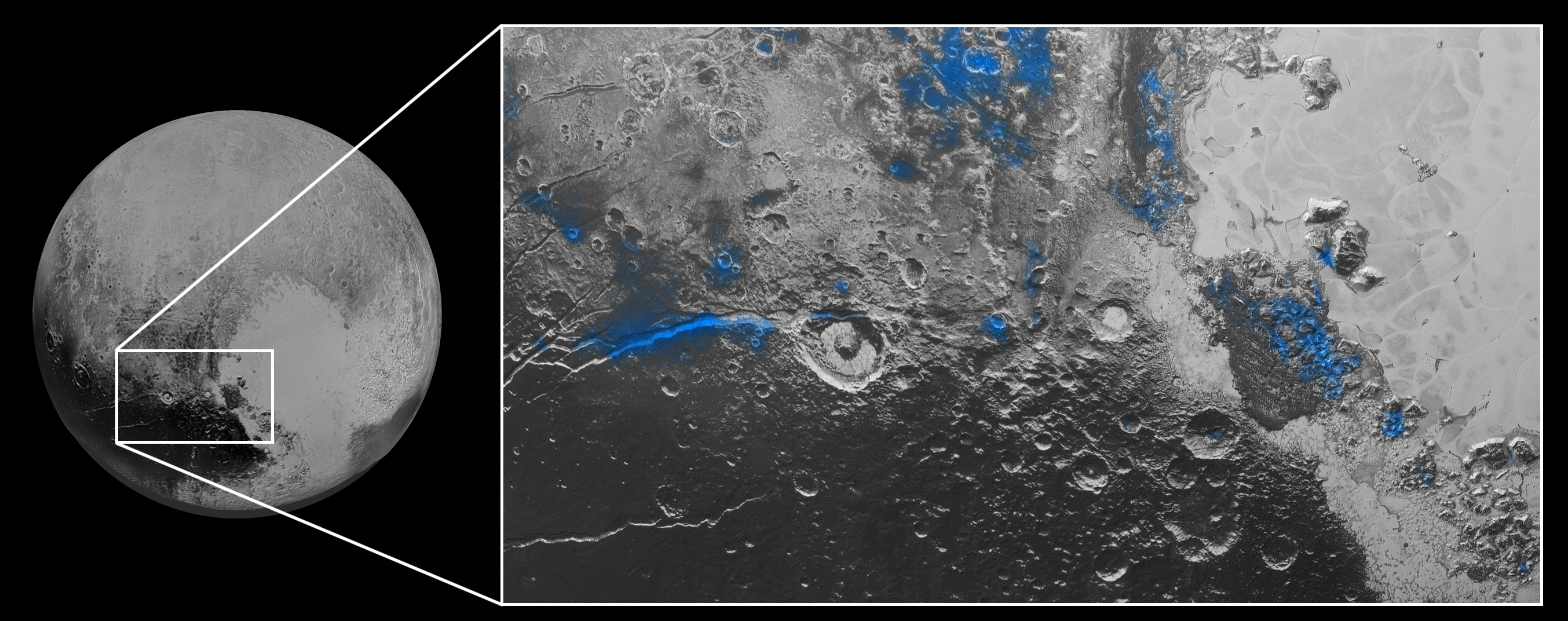
The blue color comes from hazes in the thin atmosphere, but why blue? The soot-like particles in the hazes are likely gray or red, but they scatter light in such a way that the hazes appear to be blue, similar to how sunlight is scattered in Earth’s atmosphere.
“That striking blue tint tells us about the size and composition of the haze particles,” said science team researcher Carly Howett, also of SwRI. “A blue sky often results from scattering of sunlight by very small particles. On Earth, those particles are very tiny nitrogen molecules. On Pluto they appear to be larger – but still relatively small – soot-like particles we call tholins.”
The gorgeous new image of Pluto’s blue atmosphere backlit by the Sun could almost be mistaken for a similar image of Earth. The composition of the particles might be different, but the effect is more or less the same. The image was generated by software which combines information from blue, red and near-infrared images to replicate the color a human eye would see, as accurately as possible.
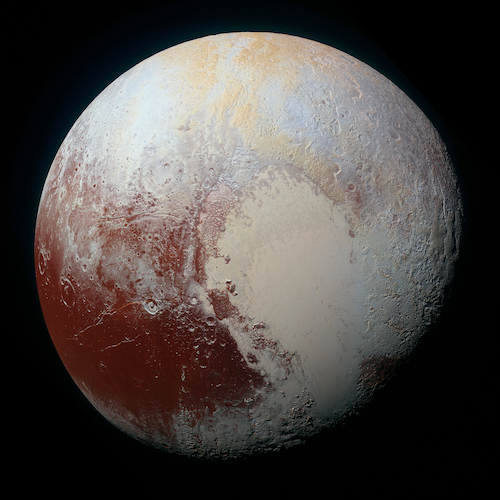
The tholins are thought to form high up in the atmosphere; ultraviolet light from the Sun then breaks apart and ionizes nitrogen and methane molecules, allowing them to react with one another to form more and more complex negatively and positively charged ions. Later, they recombine, forming very complex macromolecules, similar to the process which occurs in the upper atmosphere of Saturn’s moon Titan. These molecules continue to combine and grow until they become small particles. Volatile gases then condense and coat their surfaces with ice frost before they have time to fall through the atmosphere to the surface, adding to Pluto’s generally red coloring.
A larger version of the blue sky image can be seen here.
New Horizons has also found patches of water ice on Pluto’s surface, discovered by the Ralph spectral composition mapper on the spacecraft. The patches are small, but numerous. Much larger areas of the surface are coated with nitrogen, methane and carbon monoxide ices, as was expected in the extremely cold conditions, much colder than any place on Earth. But water ice is common throughout the Solar System, and Pluto is no exception.
“Large expanses of Pluto don’t show exposed water ice,” said science team member Jason Cook, of SwRI, “because it’s apparently masked by other, more volatile ices across most of the planet. Understanding why water appears exactly where it does, and not in other places, is a challenge that we are digging into.”
One unusual aspect of the ice however is that it appears to be concentrated in areas which are bright red in color. The red color is likely from reddish tholins in the ice, but scientists don’t yet know why this process occurs the way it does.
“I’m surprised that this water ice is so red,” says Silvia Protopapa, a science team member from the University of Maryland, College Park. “We don’t yet understand the relationship between water ice and the reddish tholin colorants on Pluto’s surface.”
Apart from the atmosphere and water ice, the surface of Pluto has already shown a range of subtle color differences, with pale blues, yellows, oranges and deep reds. Some landforms have their own distinct colors, which is evidence of a complex geological and climatological history on Pluto. Pluto’s largest moon Charon also has a prominent reddish colored polar cap, which scientists think might be caused by tholins escaping from Pluto’s atmosphere and condensing on the moon.
New Horizons also recently sent back images of unusual “snakeskin” terrain and methane ice. The “snakeskin” terrain appears in an area near the terminator, the division between the day and night sides of Pluto. The “rippled” landscape is composed of long blue-grey ridges and other reddish material.
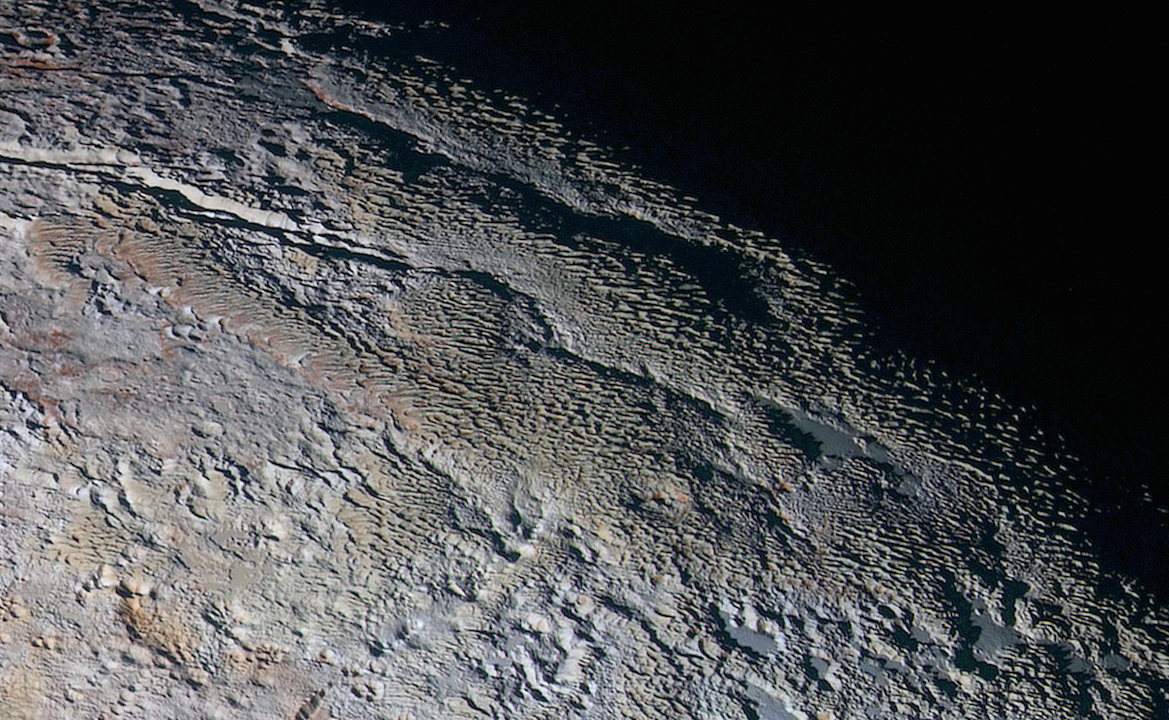
A new map shows the distribution of methane ice on Pluto’s surface. While some areas, such as Sputnik Planum, show an abundance of methane ice, other regions, such as Cthulhu Regio, show none. Higher concentrations of methane ice are found on the smooth, bright plains and crater rims, but there is usually little or none inside craters or in regions of darker terrain. Huge glaciers of nitrogen ice slowly move across the surface in areas such as Sputnik Planum, reminiscent of glacial flows on Earth.
There may also be cryovolcanoes on Pluto, a cold type of volcanism with ice instead of lava, which might explain how nitrogen gets replenished in Pluto’s atmosphere.
The massive downlink of data from New Horizons will continue for almost another year. All of the amazing images and other data so far only account for about 10% of the data collected by the spacecraft during its closest approach of Pluto on July 14.
The New Horizons spacecraft is currently 3.1 billion miles (5 billion kilometers) from Earth. On Jan. 1, 2019, New Horizons will reach its next target in the Kuiper Belt, 2014 MU69.
See the New Horizons website for more information about the mission and stay tuned to AmericaSpace for continuing coverage.
Want to keep up-to-date with all things space? Be sure to “Like” AmericaSpace on Facebook and follow us on Twitter: @AmericaSpace
Missions » New Horizons »




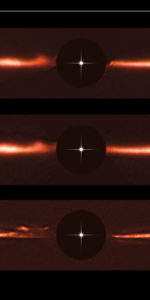
3 Comments
3 Pings & Trackbacks
Pingback:A colourful world: new images of Pluto show blue skies and red water ice
Pingback:New Horizons Changes Course for Flyby of First Post-Pluto Destination on New Years Day 2019 « AmericaSpace
Pingback:Pluto’s Large Nitrogen Ice ‘Sea’ Probably Formed from Giant Impact, Scientists Say « AmericaSpace